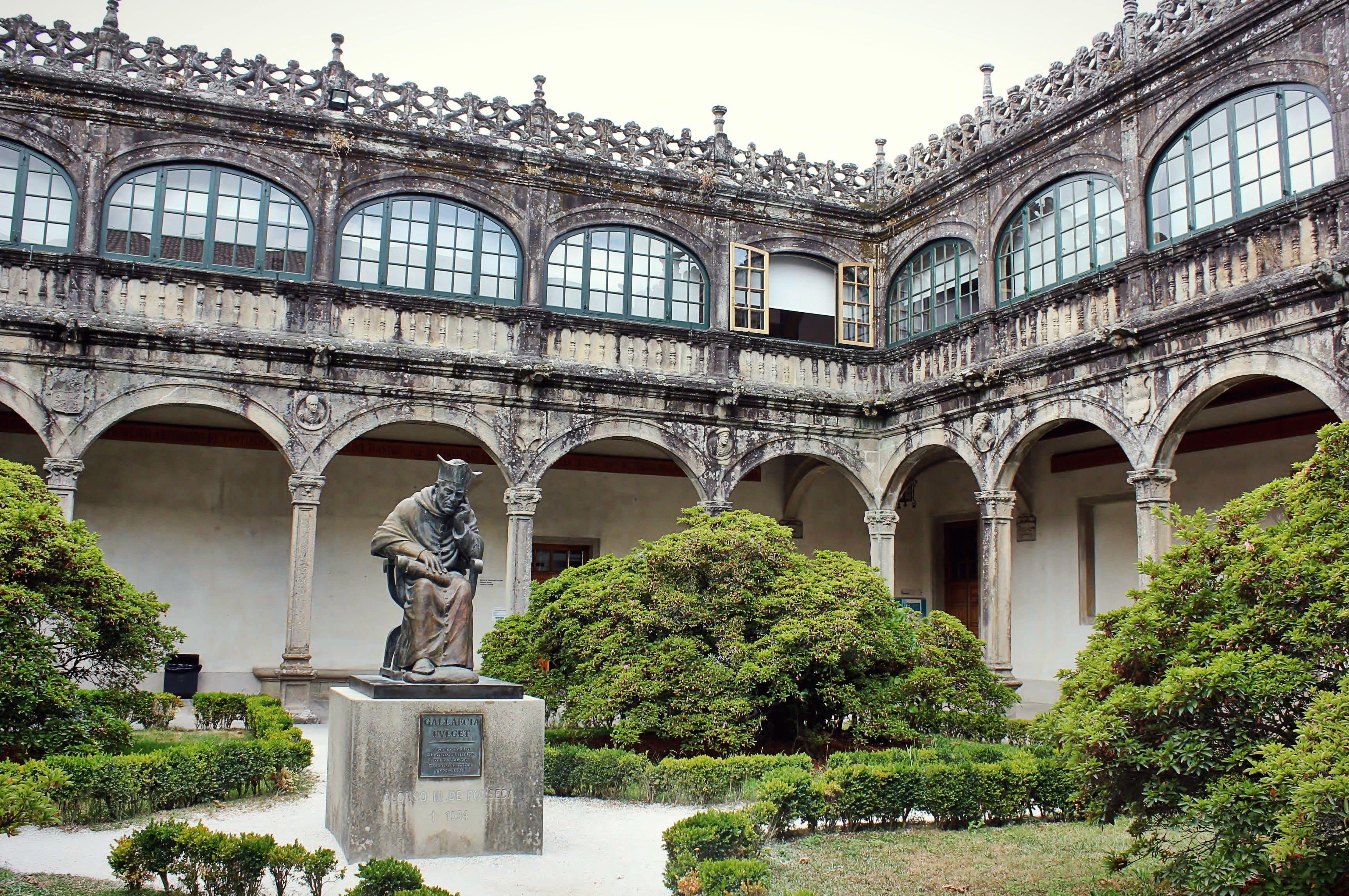Santiago de Compostela is home to one of the country’s oldest universities, the University of Santiago de Compostela (USC). The university got its start way back in 1495 when a monk named Lope Gómez de Marzoa started a school to help poor students get an education. At first, it was just a small college called Colegio de Santiago Alfeo where religion was the only subject being taught at the school. Then in 1526, King Charles V made Santiago de Compostela an official university. In these early years, the school mostly taught religious subjects like theology and canon law. The classes were held in beautiful old buildings that you can still see today in the city’s old town.
The University of Santiago de Compostela has lasted for more than 500 years because it knows how to adapt and stay strong. It was founded in 1495 and has always worked to improve and change with the times. Even through wars, political changes, and new technologies, the university has continued to grow. It has strong support from the local community and the government, and it focuses on both teaching and research. By mixing tradition with new ideas, the university has stayed important and useful. Its long history shows how learning and hard work can help something last for centuries.

During the 1700s, the university started teaching more subjects beyond just religion. They added classes in medicine, law, and philosophy. The school became famous for its beautiful library and grand buildings like the Colegio de Fonseca, which had an amazing staircase and big classrooms. Things got tough when Napoleon’s army invaded Spain in the early 1800s. Many schools closed, but USC managed to stay open. After this difficult time, the university worked hard to improve and add more science classes to keep up with modern education.
The 20th century brought big changes. In the 1960s, the university built a whole new campus north of the city to handle all the new students. Today, USC has over 30,000 students and programs in everything from medicine to computer science. Even though it’s now a modern university with high-tech labs and sports facilities, USC still keeps its historic buildings and traditions alive. Many students study in rooms where people have been learning for 500 years. USC isn’t just important for students, it’s helped shape Galicia’s culture and history. During times when Spain’s government didn’t allow regional languages, the university helped keep the Galician language alive. Today, it’s one of the best places to study Galician history and literature.
The university also brings people from all over the world to Santiago, just like the Camino pilgrimage does. Walking through campus, you might hear Spanish, Galician, English, and many other languages as students from different countries study together. From its start as a small religious school to its place today as a major university, USC shows how education can last through wars, political changes, and technological advances. It’s a living piece of history that continues to teach new generations just as it has for over 500 years.
If you want to learn more about the history of the University of Santiago de Compostela (USC), click here

